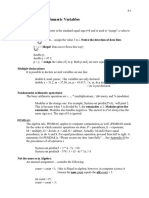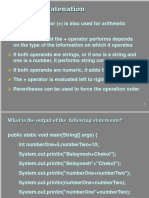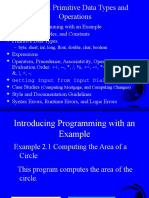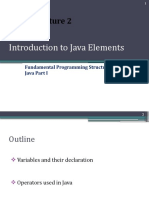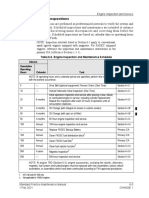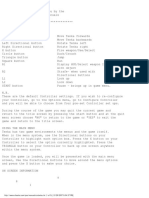0% found this document useful (0 votes)
34 views22 pages(Lesson 2) - Input and Extra Operators
The document provides an overview of arithmetic operators in programming, including binary and unary operators, along with examples of their usage. It also covers input statements for reading user input from the console and dialog boxes, demonstrating how to handle different data types. Additionally, it includes examples of augmented assignment operators and how to customize message box appearances in Java.
Uploaded by
sskx55nchbCopyright
© © All Rights Reserved
We take content rights seriously. If you suspect this is your content, claim it here.
Available Formats
Download as PDF, TXT or read online on Scribd
0% found this document useful (0 votes)
34 views22 pages(Lesson 2) - Input and Extra Operators
The document provides an overview of arithmetic operators in programming, including binary and unary operators, along with examples of their usage. It also covers input statements for reading user input from the console and dialog boxes, demonstrating how to handle different data types. Additionally, it includes examples of augmented assignment operators and how to customize message box appearances in Java.
Uploaded by
sskx55nchbCopyright
© © All Rights Reserved
We take content rights seriously. If you suspect this is your content, claim it here.
Available Formats
Download as PDF, TXT or read online on Scribd
/ 22







